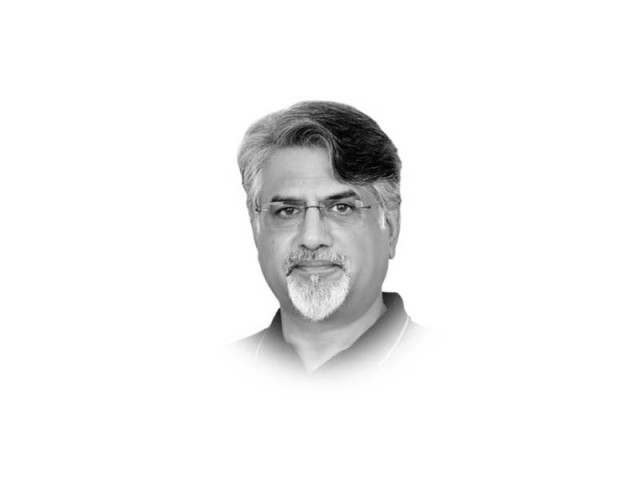Contesting the Arctic

Historically, without mentioning the achievements of three people it will be unfair to talk about the current geopolitical environment in the Artic.
The first is a Dutch navigator by the name of Willem Barents (1550-1597) who searched for a northeast passage from Europe to Asia and Barents Sea is named after him. It was Willem Barents that Shakespeare was referring to when in 1601, in his famous romantic comedy, The Twelfth Night, he referred to a Dutchman when writing, “You have now sailed into the north of my lady’s opinion where you will hang like an icicle on a Dutchman’s beard.”
The second is a Danish explorer who was in the service of Russia and an officer in Russian Navy named Vitus Jonassen Bering (1681-1741). He is credited with discovering the gap and the narrow channel of water that separates Siberia from Alaska, named after him as Bering Strait. He made two voyages — the first was for two years (1728-30) and the second for eight years (1734-41). His expeditions put an end to the growing 17th century myth that Asia and America were connected by the land up in the north.
The third person is Peter the Great (1672-1725), the first Emperor of all Russia. I think if we consider the past 500 years, Peter the Great and his leadership will figure out as a good example to explain that the greatness of a leader cannot depend on military conquests alone but also on his many other achievements. He visited Europe twice, once at the end of the 17th century and later in the second decade of the 18th century. One may keep in mind that by the end of the 17th Century Russia had conquered almost all of Serbia and Peter the Great played a huge role in politically writing the story of Russian rise from the times of Mongol savagery to the cultivation of civilisation under his rule. He brought back from Europe ship loads of books, maps, tools and also the new habits and values he learnt during his stay there. On his return he created eight provinces in Russia and Serbia was declared as one of the provinces. He created the Russian Senate, replaced the Patriarch with the Holy Council of Clerics which was made answerable to a government official. He obtained outlets for his navy at the Caspian and the Black Sea and established Russia on the Baltic coast by dislodging Sweden from there. In the end he fought the great North war against Sweden from 1700-1721 and incorporated Livonia (Latvia and Estonia) into Russia.
Four geopolitical factors compelled me to give the details of Peter the Great achievements. Without understanding these geopolitical factors, a reader will not be able to grasp the historical and geopolitical contexts in which Russia views its Arctic policy today.
The first is giving Arctic the attention. Before his landmark achievement there was a saying in Siberia that, “God is high up and the Tsar far off.” Peter the Great practically reawakened, rekindled and reintroduced the suspended phenomenon of nature and human laws in the lives of the people of Siberia and Far East. Politically, giving Arctic the due attention was an important decision and the first geopolitical act in formulating a Russian Artic strategy.
The second was managing people and borders. Russia borders an approximately 50% of the entire Arctic perimeter and geopolitically it had to take a lead role in managing and supervising the key issues that defined politics at the top of the world. The keys issues included: matters of governing indigenous Artic population (4 million indigenous people live in Artic, 2 million of which are Russians), exploration of resources, preservation of environment and on top of all matters of national security.
The third factor was national security. In terms of national security Russia was able to identify Arctic’s military significance in its air routes and water ways. Russia could not afford to ignore the geopolitical context of threat from the north and thus needed a heavy concentration of its strategic power in the north. During the Cold War the phenomenon of ‘bombers and missiles gap’ guided the military strategy between the two superpowers. But today up in the north and in the Artic it is the ‘icebreaker gap’ that captures the imagination of the military strategists of the great powers. Today, the Russian nuclear powered icebreaker fleet is the largest in the world. According to an estimate the fleet includes 30 diesel-powered icebreakers. The US is said to have only three icebreakers. The leading pundits and gurus of strategy such as Carl Von Clausewitz, Sun-tzu, Thucydides and even George Kennan warned against the exaggeration of military threats — a fact that most strategists believe is overblown in case of Arctic, yet all of them advocated deployment of all possible capabilities to meet the identified threats. Russia has ten times as much Arctic coastline as the US and is also fifty times more economically dependent on the Arctic region. So for Russia to keep a giant northern naval fleet built around a fleet of icebreakers not only indicates its military superiority in the region but also its readiness to guard the northern sea route which it considers to be within its territorial waters. Strategically, Russia’s three naval fleets in Pacific, Baltic and Black Sea can only access high seas via narrow choke points — Bosphorus Strait, Malacca Strait, Danish Strait — and thus the enemy can locate and track Russian naval movement. In Arctic, Russia oversees and controls all the choke points and when in future this will become a pivot area in the last frontier, the Russians will have an upper hand.
The fourth geopolitical factor in case of Arctic comes from the father of the modern geopolitics — Sir Halford Mackinder. Arctic is the future pivot area of the world. In 1904, Mackinder identified the world’s ‘Pivot Area’ as the place where Eurasian rivers drain into the icebound Arctic Ocean. His prediction was that this area would be linked to the Eurasian ‘Heartland’ through the development of railroads and eventually air and naval routes, basically altering overall power politics. Today, Russia sits on the Mackinder identified future ‘Pivot Area’ of the world and geopolitically quite comfortable to handle any situation that may develop as a strategic showdown between Russia and the West. Geopolitically, Russia’s geography gives it strategic depth but without the right politics it would not have a northern strategy — not as dominating as it has today in the Arctic.
















COMMENTS
Comments are moderated and generally will be posted if they are on-topic and not abusive.
For more information, please see our Comments FAQ